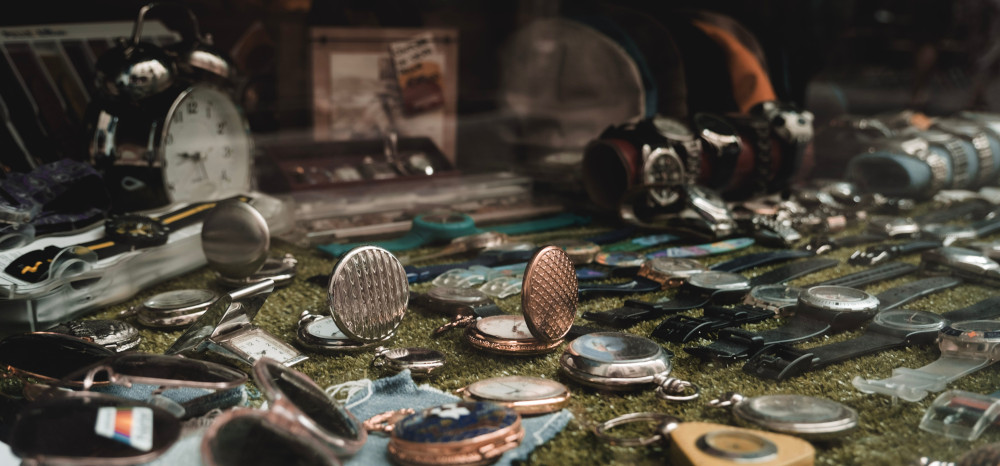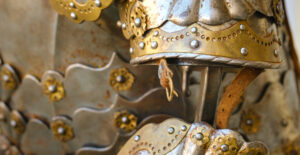
In the heart of South Africa’s inner cities, where neon pawn signs buzz beside tuck shops and barbershops, there’s a quieter trade pulsing beneath the surface. It’s not the booming gold mining industry or the glittering displays in upscale jewelry stores. No, this gold doesn’t come with velvet boxes or insurance certificates. This is the gold of desperation, of promises pawned and dignity weighed on a scale. And more often than anyone wants to admit, it isn’t even real.
Pawn shops, those cramped havens of second chances and slippery deals, have long been a fixture of South African survival. For many, they offer a kind of last-resort liquidity, an option when banks say no and payday is too far. A gold chain for groceries. A bracelet for school fees. A ring to keep the electricity on. The transaction is quick, the terms simple, and the consequences quietly brutal.
But something’s changed. In recent years, a flood of counterfeit gold has quietly slipped into the system. It’s a shift powered by cheap manufacturing, online tutorials, and the rising desperation of a country still reeling from the economic aftershocks of the pandemic and a cost-of-living crisis that refuses to ease. Pawn shop owners have become human lie detectors, their hands trained to feel the weight of truth, or its absence.
“There’s a kind of hum that real gold has when it hits the counter,” says Sipho, a Johannesburg pawnbroker who’s been in the game for over twenty years. “The fakes? They’re silent. Or worse, they sing too loud.”
Most counterfeit pieces aren’t crude fakes. They’re layered, a shell of gold over tungsten or steel, dressed convincingly in 18-carat shine. To the untrained eye, they pass. To the desperate seller, they’re gospel. But to pawn shop staff armed with acid tests and years of instinct, they’re time bombs.
When these fakes get caught, things get tense. It’s not always clear whether the seller knew. Some genuinely inherited the piece. Some were gifted it by boyfriends, husbands, fathers. Others bought it on the street for a “steal” and are trying to flip it for food money. The reaction to being told the gold is worthless ranges from confusion to disbelief to outright fury. And in that moment, a different kind of weight is felt, the weight of shame.
There’s a particularly cruel twist in this world, real gold can trap you in debt just as quickly as false gold can betray you. When pawned, a genuine gold item offers a loan, usually for a fraction of its value. Miss the repayment window, and the item is gone. But pay on time? You still might find yourself trapped in a cycle of pawning and reclaiming, like a dog chasing its own tail. The ring comes and goes. The bracelet vanishes and reappears. Each month, a fee. Each return, a sigh of relief tinged with dread.
Some pawn shops don’t even bother with loans anymore. They buy outright. No receipts, no returns. Just cash and silence. The gold is melted down within days, stripped of history and memory. A wedding ring that once symbolized forever becomes an anonymous droplet in a gold bar destined for resale, resale, resale. In this system, sentimentality is a liability.
 But even this world of gritty exchange has levels. In the leafy suburbs, you’ll find “boutique” pawn services offering appointments and appraisals over coffee. Here, the gold is often designer, the clients discreet, the motivations different. A divorce. A rebrand. A financial reshuffle. But at its core, it’s the same act, turning gold into liquidity, and stories into silence.
But even this world of gritty exchange has levels. In the leafy suburbs, you’ll find “boutique” pawn services offering appointments and appraisals over coffee. Here, the gold is often designer, the clients discreet, the motivations different. A divorce. A rebrand. A financial reshuffle. But at its core, it’s the same act, turning gold into liquidity, and stories into silence.
There are also those who’ve turned pawning into side hustle economics. Students flipping rings on Facebook Marketplace. Hustlers scouring secondhand sites for underpriced finds. TikTok tutorials showing how to test karats at home. It’s the new gold rush, minus the pickaxe, and with far more risk.
Authorities try to clamp down on counterfeit gold, but it’s like chasing shadows. The fakes come in from China, from Dubai, even from local workshops. Some are so good they pass initial tests. Others are paired with falsified paperwork. And when a fake slips through and gets bought, it often gets resold to someone else. The cycle continues, false gold, real money, real consequences.
What’s perhaps most sobering is the human toll behind all this. Every chain, real or fake, has a story. A grandmother’s necklace sold to pay bail. A teenage boy’s fake Rolex swapped for a few hundred rand. A woman’s engagement ring bartered for airtime and nappies. These aren’t just objects. They’re emotional anchors, economic lifelines, cultural touchstones.
There’s a word that’s often whispered in these spaces, dignity. It’s the first thing you try to hold onto when pawning something you love. It’s the last thing to leave when you’re told it’s worth nothing. And yet, pawn shops, despite their reputation, often serve as unofficial counselors, economic first responders, and cultural mirrors. They know the pulse of the street better than most banks ever could.
False gold tells us something about who we are, what we value, and what we’re willing to risk. It’s about hope and illusion. About debt and dignity. About the razor-thin line between survival and collapse. And in South Africa’s pawn shop corridors, that line glints, sometimes dull, sometimes dazzling, but always heavy with more than just metal.



